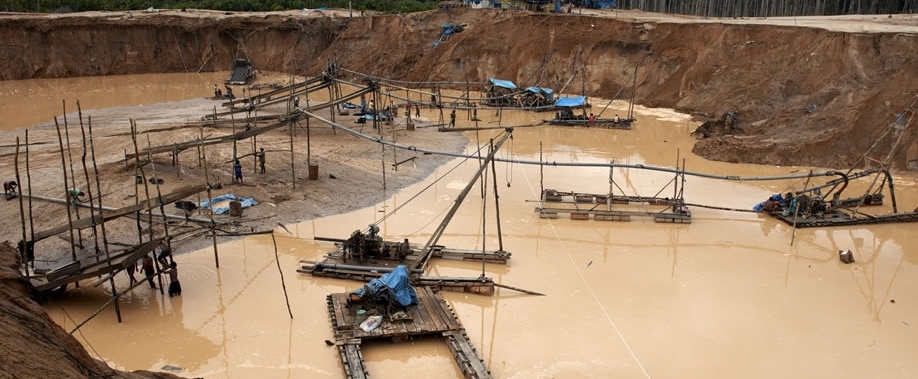Gold mining technology varies from very simple, manual techniques, to mechanized and more sophisticated mining processes. Traditionally, hand tools like the characteristic ‘gold pan’ were and are still used by almost all small-scale gold miners. They use the gold pan to prospect and to concentrate the gold in the final phase. The modern equipment is more mechanized by means of pumps and excavators for example.
One can find gold in primary or secondary gold deposits. Primary gold deposits or ‘veins’ are often mined via shafts and often demand more sophisticated machinery. It can be detached using dynamite, after which crushers and mills break up the ore into smaller particles to extract the gold. Read more about gold mining techniques on primary gold deposits.
Small-scale gold mining mostly takes place in secondary deposits. This is also called placer mining. Small gold particles eroded from the primary deposit and were transported by gravity and/or water to its current place. Since gold is heavier than other materials, it accumulates at certain points, and these are the places that the miners look for. Often, the gold lies under a layer of organic material, sand and clay that has to be removed first. Read more about gold mining techniques on secondary gold deposits.
Small-scale gold miners throughout the Amazon use similar techniques, although they have different local features and names. What is also different in each country and region, is the official denomination of artisanal, small-scale, medium-scale or large-scale mining by official institutions.
Gold mining can be dangerous work. Read more about small-scale gold mining and occupational health.
There are many critics of gold mining to be destructive for the environment, especially for its use of mercury. The Fairmined Gold standard promotes the responsible use of mining techniques.

